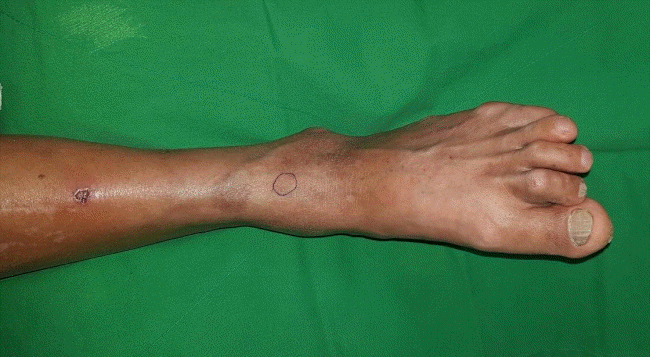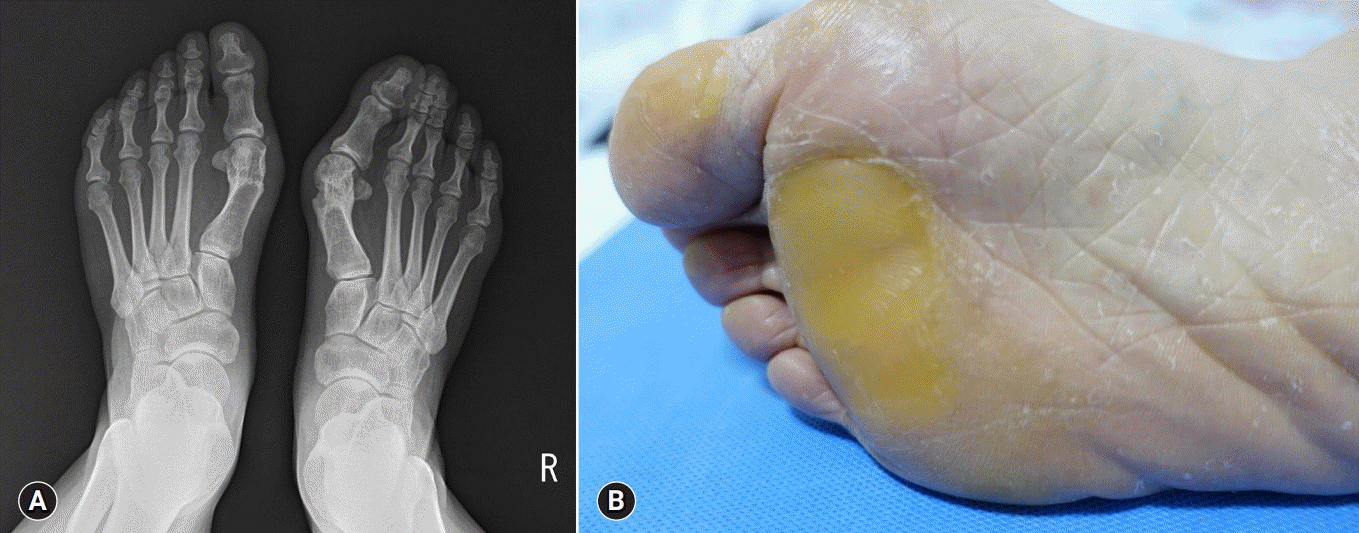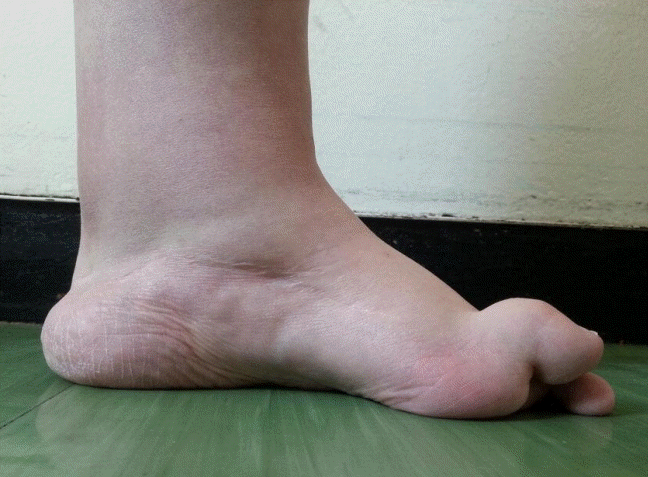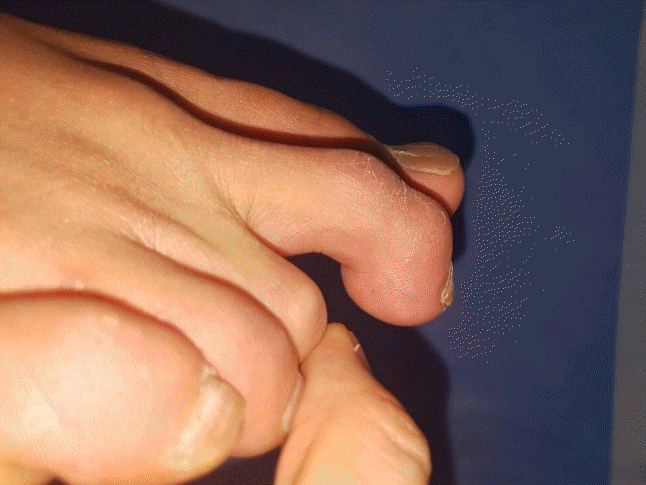1. Chang MC. Reduced foot pain after spasticity control with alcohol block in a patient with chronic hemiparetic stroke: a case report. J Phys Ther Sci. 2017; 29:767–70.

2. Chang MC. Metatarsalgia in a patient with chronic hemiparetic stroke managed with alcohol block of the tibial nerve: a case report. Neurol Asia. 2017; 22:267–70.
3. Branthwaite H, Chockalingam N, Greenhalgh A. The effect of shoe toe box shape and volume on forefoot interdigital and plantar pressures in healthy females. J Foot Ankle Res. 2013; 6:28.

4. Martorell JM. Hallux disorder and metatarsal alignment. Clin Orthop Relat Res. 1981; (157):14–20.

5. DiPreta JA. Metatarsalgia, lesser toe deformities, and associated disorders of the forefoot. Med Clin North Am. 2014; 98:233–51.

6. Espinosa N, Brodsky JW, Maceira E. Metatarsalgia. J Am Acad Orthop Surg. 2010; 18:474–85.

7. Bardelli M, Turelli L, Scoccianti G. Definition and classification of metatarsalgia. Foot and Ankle Surg. 2003; 9:79–85.

8. Charen DA, Markowitz JS, Cheung ZB, Matijakovich DJ, Chan JJ, Vulcano E. Overview of metatarsalgia. Orthopedics. 2019; 42:e138–43.

9. Maestro M, Besse JL, Ragusa M, Berthonnaud E. Forefoot morphotype study and planning method for forefoot osteotomy. Foot Ankle Clin. 2003; 8:695–710.

10. Slullitel G, López V, Calvi JP, Seletti M, Bartolucci C, Pinton G. Effect of first ray insufficiency and metatarsal index on metatarsalgia in hallux valgus. Foot Ankle Int. 2016; 37:300–6.

11. Espinosa N, Maceira E, Myerson MS. Current concept review: metatarsalgia. Foot Ankle Int. 2008; 29:871–9.

12. Gauthier G, Elbaz R. Freiberg's infraction: a subchondral bone fatigue fracture. A new surgical treatment. Clin Orthop Relat Res. 1979; (142):93–5.
13. Talusan PG, Diaz-Collado PJ, Reach JS Jr. Freiberg's infraction: diagnosis and treatment. Foot Ankle Spec. 2014; 7:52–6.
14. Acevedo JI. Fixation of metatarsal osteotomies in the treatment of hallux valgus. Foot Ankle Clin. 2000; 5:451–68.
15. Hofstaetter SG, Hofstaetter JG, Petroutsas JA, Gruber F, Ritschl P, Trnka HJ. The Weil osteotomy: a seven-year follow-up. J Bone Joint Surg Br. 2005; 87:1507–11.
16. Reddy VB. Metatarsal osteotomies: complications. Foot Ankle Clin. 2018; 23:47–55.
17. Chang AH, Abu-Faraj ZU, Harris GF, Nery J, Shereff MJ. Multistep measurement of plantar pressure alterations using metatarsal pads. Foot Ankle Int. 1994; 15:654–60.

18. Hsi WL, Kang JH, Lee XX. Optimum position of metatarsal pad in metatarsalgia for pressure relief. Am J Phys Med Rehabil. 2005; 84:514–20.

19. Männikkö K, Sahlman J. The effect of metatarsal padding on pain and functional ability in metatarsalgia. Scand J Surg. 2017; 106:332–7.

20. Robinson AH, Limbers JP. Modern concepts in the treatment of hallux valgus. J Bone Joint Surg Br. 2005; 87:1038–45.

21. Nix S, Smith M, Vicenzino B. Prevalence of hallux valgus in the general population: a systematic review and meta-analysis. J Foot Ankle Res. 2010; 3:21.

22. Hecht PJ, Lin TJ. Hallux valgus. Med Clin North Am. 2014; 98:227–32.

23. McBride ED. A conservative operation for bunions. J Bone Joint Surg Am. 1928; 10:735–9.

24. Perera AM, Mason L, Stephens MM. The pathogenesis of hallux valgus. J Bone Joint Surg Am. 2011; 93:1650–61.

25. Nery C, Coughlin MJ, Baumfeld D, Ballerini FJ, Kobata S. Hallux valgus in males--part 1: demographics, etiology, and comparative radiology. Foot Ankle Int. 2013; 34:629–35.
26. Wilkerson RD, Mason MA. Differences in men's and women's mean ankle ligamentous laxity. Iowa Orthop J. 2000; 20:46–8.
27. Tehraninasr A, Saeedi H, Forogh B, Bahramizadeh M, Keyhani MR. Effects of insole with toe-separator and night splint on patients with painful hallux valgus: a comparative study. Prosthet Orthot Int. 2008; 32:79–83.

28. Cha YH, Kim SJ, Lee KH, Kwon JY, Kim DH, Seo A, et al. Designing personalized toe spreaders for hallux valgus with three-dimensional scanning and printing. J Biomed Eng Biosci. 2018; 5:1–6.

29. Camasta CA. Hallux limitus and hallux rigidus. Clinical examination, radiographic findings, and natural history. Clin Podiatr Med Surg. 1996; 13:423–48.
30. Coughlin MJ, Shurnas PS. Hallux rigidus: demographics, etiology, and radiographic assessment. Foot Ankle Int. 2003; 24:731–43.

31. Shereff MJ, Baumhauer JF. Hallux rigidus and osteoarthrosis of the first metatarsophalangeal joint. J Bone Joint Surg Am. 1998; 80:898–908.

32. Beeson P, Phillips C, Corr S, Ribbans W. Classification systems for hallux rigidus: a review of the literature. Foot Ankle Int. 2008; 29:407–14.

33. Bingold AC, Collins DH. Hallux rigidus. J Bone Joint Surg Br. 1950; 32:214–22.

34. Zammit GV, Menz HB, Munteanu SE. Structural factors associated with hallux limitus/rigidus: a systematic review of case control studies. J Orthop Sports Phys Ther. 2009; 39:733–42.

35. Bartlett DH. Arthroscopic management of osteochondritis dissecans of the first metatarsal head. Arthroscopy. 1988; 4:51–4.

36. Bonney G, macnab I. Hallux valgus and hallux rigidus; a critical survey of operative results. J Bone Joint Surg Br. 1952; 34:366–85.
37. Shrader JA, Siegel KL. Nonoperative management of functional hallux limitus in a patient with rheumatoid arthritis. Phys Ther. 2003; 83:831–43.

38. Schuh R, Trnka HJ. First metatarsophalangeal arthrodesis for severe bone loss. Foot Ankle Clin. 2011; 16:13–20.

39. Becerro de Bengoa Vallejo R, Sanchez Gómez R, Losa Iglesias ME. Clinical improvement in functional hallux limitus using a cut-out orthosis. Prosthet Orthot Int. 2016; 40:215–23.

40. Rambarran KK, Lemaire E, Robertson GD. Effectiveness of the Kinetic Wedge foot orthosis modification to reduce relative plantar pressure. 25th Conference of the American Society of Biomechanics [Internet]. 2003. [cited 2019 March 28].
http://www.asbweb.org/conferences/2003/pdfs/163.pdf.
41. Menz HB, Levinger P, Tan JM, Auhl M, Roddy E, Munteanu SE. Rocker-sole footwear versus prefabricated foot orthoses for the treatment of pain associated with first metatarsophalangeal joint osteoarthritis: study protocol for a randomised trial. BMC Musculoskelet Disord. 2014; 15:86.

42. Smith DG, Barnes BC, Sands AK, Boyko EJ, Ahroni JH. Prevalence of radiographic foot abnormalities in patients with diabetes. Foot Ankle Int. 1997; 18:342–6.

43. Malhotra K, Davda K, Singh D. The pathology and management of lesser toe deformities. EFORT Open Rev. 2017; 1:409–19.

44. Stainsby GD. Pathological anatomy and dynamic effect of the displaced plantar plate and the importance of the integrity of the plantar plate-deep transverse metatarsal ligament tie-bar. Ann R Coll Surg Engl. 1997; 79:58–68.
45. Shirzad K, Kiesau CD, DeOrio JK, Parekh SG. Lesser toe deformities. J Am Acad Orthop Surg. 2011; 19:505–14.

46. Coughlin MJ, Dorris J, Polk E. Operative repair of the fixed hammertoe deformity. Foot Ankle Int. 2000; 21:94–104.

47. Mizel MS, Michelson JD. Nonsurgical treatment of monarticular nontraumatic synovitis of the second metatarsophalangeal joint. Foot Ankle Int. 1997; 18:424–6.

48. Di Caprio F, Meringolo R, Shehab Eddine M, Ponziani L. Morton's interdigital neuroma of the foot: a literature review. Foot Ankle Surg. 2018; 24:92–8.
49. Bradley N, Miller WA, Evans JP. Plantar neuroma: analysis of results following surgical excision in 145 patients. South Med J. 1976; 69:853–4.
50. Kasparek M, Schneider W. Surgical treatment of Morton's neuroma: clinical results after open excision. Int Orthop. 2013; 37:1857–61.

51. Sofka CM, Adler RS, Ciavarra GA, Pavlov H. Ultrasound-guided interdigital neuroma injections: short-term clinical outcomes after a single percutaneous injection--preliminary results. HSS J. 2007; 3:44–9.

52. Climent JM, Mondéjar-Gómez F, Rodríguez-Ruiz C, Díaz-Llopis I, Gómez-Gallego D, Martín-Medina P. Treatment of Morton neuroma with botulinum toxin A: a pilot study. Clin Drug Investig. 2013; 33:497–503.

53. Hinz A. Nerve disorders. In : DiGiovanni CW, Greisberg J, editors. Foot and ankle: core knowledge in orthopaedics. Philadelphia: Elsevier Mosby;2007. p. 171–6.





 PDF
PDF Citation
Citation Print
Print







 XML Download
XML Download